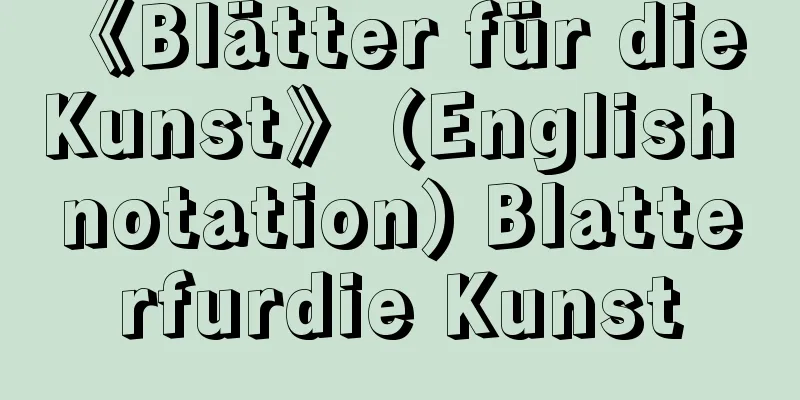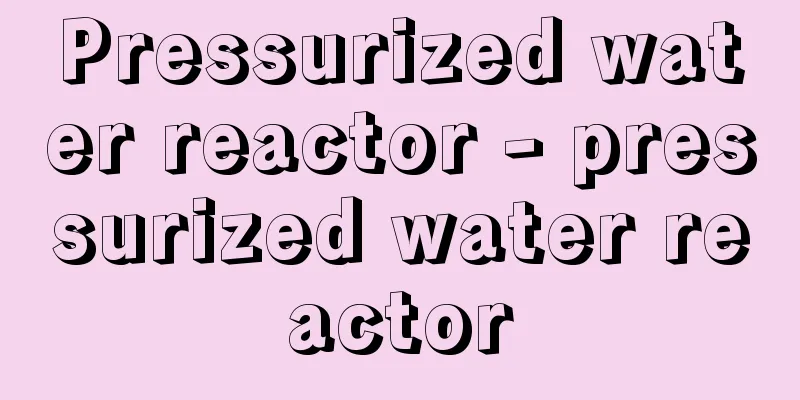Customs duties

|
Taxes imposed on goods traded across borders. There are transit taxes imposed on goods passing through one's own country, export taxes imposed on goods exported to foreign countries, and import taxes imposed on goods imported from foreign countries. Of these, transit taxes were gradually abolished in various countries from around the latter half of the 19th century because they meant losing the various benefits of transit trade, such as handling fees, freight, insurance, storage fees, and barge hire. Export taxes also increase the price of export goods by the amount of the tax, weakening international competitiveness and hindering exports, so they are now abolished by all countries except those that are trying to maintain their fiscal revenues. The UK abolished export taxes in 1845, and Japan abolished them in 1901 (Meiji 34). Therefore, today, tariffs are used to mean taxes imposed on imported goods, that is, import duties. [Kisuke Tanaka and Takuo Maeda] Tariff FeaturesThe function of tariffs is often discussed from two perspectives: their fiscal function (fiscal tariffs) and their function of protecting domestic industries (protective tariffs). The former function is to bring in fiscal revenue through the collection of tariffs. Tariffs whose main purpose is this revenue function are called fiscal tariffs or revenue tariffs. In times when it was difficult to find other major sources of revenue, tariffs occupied a major position in the tax system. For example, in the first half of the 19th century (1800-1860), tariff revenues accounted for about 85% of the national revenue in the United States. Later, as the national economy developed, developed countries began to seek financial sources from income generated by production activities, and the role of tariffs as a means of raising funds declined. In fact, in Japan, the share of tariff revenues in national tax revenues is very low at about 1.8% (based on the 2007 fiscal year settlement). However, some developing countries still use tariffs as an important means of securing financial resources. On the other hand, when tariffs are imposed, the domestic price of imported goods rises and the amount of imports decreases. This can lead to increased production of domestic goods that are too expensive to compete on an equal footing with imported goods. This effect of tariffs is called the function of protecting domestic industries. Tariffs imposed on competing imports with this function as their main purpose are called protective tariffs. There are two types of tariffs: those that aim to protect and nurture infant industries (nurturing tariffs) and those that aim to protect and maintain existing industries (maintenance tariffs). However, excessive protection of domestic industries leads to the prevalence of unfair trade. For this reason, tariffs are sometimes used as a countermeasure against measures that have a trade-distorting effect. For example, under the Anti-Dumping Agreement (Agreement on the Implementation of Article VI of the GATT), anti-dumping duties are used to correct dumping that is found to be taking place. The function of tariffs used in such cases is called the trade-distorting effect correction function (sanctions function). Although tariffs have the above functions, the imposition of tariffs carries the possibility of reducing fairness in the global economy as a whole, and so since 1947, under GATT (General Agreement on Tariffs and Trade, the predecessor of the World Trade Organization (WTO)), countries have successively lowered their effective tariff rates through several rounds of tariff negotiations, including the Kennedy Round, Tokyo Round, and Uruguay Round. As a result, Japan's effective tariff rate (volume-weighted average) for industrial products is 1.5%, a relatively low level compared to the United States' 3.5%, the European Union's 3.6%, and Canada's 4.8%. However, there are still some items in sectors such as agricultural products where high tariffs are maintained in each country. [Kisuke Tanaka and Takuo Maeda] National and Conventional TariffsJapan's customs system is governed mainly by three customs laws: the Customs Law (Law No. 61, 1954), the Customs Tariff Law (Law No. 54, 1910), the Temporary Tariff Measures Law (Law No. 36, 1960), and customs treaties with foreign countries. The Customs Law prescribes matters related to general customs administration, such as payment and collection of customs duties, operation of bonded areas (areas where collection of customs duties is suspended), and customs clearance of imported and exported goods. The Customs Tariff Law prescribes matters related to customs rates, tax bases, special duties such as retaliatory duties and dumping duties, and reduction, exemption, or refund of customs duties. The Temporary Tariff Measures Law is a special law of the Customs Law and the Customs Tariff Law, and prescribes matters such as tariff rates, reduction and exemption of tariffs and refunds of tariffs, and preferential tariffs that are applied provisionally for a certain period of time in response to current industrial and economic fluctuations. According to Article 4 of the Customs Law, customs duties are paid to the customs office based on the import declaration of the importer. The tax rate applied in this case is called the tariff rate. There are two types of tariff rates: national tariff rates (basic tariff rates, provisional tariff rates, preferential tariff rates, etc.) set by domestic law and agreement tariff rates agreed upon in treaties. Japan's national tax rates are set by the Customs Tariff Act and the Temporary Tariff Measures Act. Of these, those set by the Customs Tariff Act are called basic tax rates, while those set by the Temporary Tariff Measures Act are called provisional tax rates. The Temporary Tariff Measures Act also sets preferential tax rates, that is, tariff rates lower than the general rate that are applied only to imports from specific countries, such as developing countries, in order to develop trade with these countries. On the other hand, the agreed tax rates include tax rates concessions granted under the WTO agreement, as well as EPA tariff rates applied between countries and regions based on the results of Economic Partnership Agreement (EPA) negotiations. As mentioned above, one of the basic tariff rate, provisional tariff rate, preferential tariff rate, or agreement tariff rate is applied to imported goods. This tariff rate is called the effective tariff rate. The effective tariff rate is determined in the following order of application. In other words, except in cases where the preferential tariff rate is applied, the order of application is basically the agreement tariff rate, provisional tariff rate, and basic tariff rate. However, if the agreement tariff rate is higher than the other rates, the provisional tariff rate or the basic tariff rate is applied. [Kisuke Tanaka and Takuo Maeda] Tariff ScheduleThe tariff schedule is the basis for the imposition of tariffs related to the effective tariff rate. The tariff schedule consists of tariff classification numbers (assigned to each item) and tariff rates (corresponding to the tariff classification numbers). If each country were to arbitrarily apply the tariff classification to its own advantage, negotiations to reduce tariff rates would essentially be invalid, so the tariff classification is extremely important. Regarding tariff classification, the Customs Cooperation Council (CCC, commonly known as the World Customs Organization, or WCO) formulated the International Convention on the Harmonized Commodity Description and Coding System (HS Convention) in 1988, and as of 2009, 135 countries and regions were members of the Convention. However, if countries that are not members of the Convention but have actually adopted it are included, the number of countries and regions that have adopted the Convention reaches 204. In addition, the HS Convention requires that a country's tariff schedule, as well as its export and import statistical tariff schedule, must conform to the HS tariff schedule in the Annex to the HS Convention. Therefore, Japan's Customs Tariff Act, the Schedule of the Temporary Tariff Measures Act, and the Export and Import Statistical Tariff Schedule also conform to this. The HS nomenclature has been revised four times to date in order to respond to changes in the nature of international trade (the emergence of new products due to technological innovation), etc. Among these, the 2007 revision included the creation of a new classification for IT (information technology)-related equipment, which has seen particularly remarkable technological innovation. [Maeda Takuo] Ad valorem and specific taxesCustoms duties are divided into ad valorem and specific taxes depending on the basis for calculating the tax amount, that is, whether the tax base is based on price or quantity. Article 3 of the Customs Tariff Law stipulates that "Customs duties shall be levied based on the price or quantity of imported goods as the tax base, and the tax rate shall be in accordance with the Schedule," and the above-mentioned national tariffs and agreed tariffs are all displayed as ad valorem or specific taxes, or a combination of both, depending on the item. In Japan, the most commonly used form of tariff in terms of number of items is the ad valorem tax. In the case of an ad valorem tax, the important thing is to determine the price that serves as the tax base, that is, the taxable price. This can be the price at the import port, the price at the export port, or the statutory price (the taxable price is determined by law). In Japan, the price at the import port is applied in accordance with the "Agreement on the Implementation of Article VII of the GATT" (which came into force in 1980). In practice, this is the CIF price (the shipping price plus freight and insurance fees to the import port), and the amount of tariff on the imported goods is determined by multiplying this price by the ad valorem tax rate. On the other hand, specific taxes are convenient from an administrative standpoint because they only require the quantity of imported goods (number, weight, volume, etc.), but the tax burden is unfair for goods with large disparities in quality and degree of processing, and therefore different prices. In contrast, ad valorem taxes are levied in proportion to the import price, so the tax burden is fair. In addition, the amount of tariffs changes in conjunction with price fluctuations of imported goods, so there is an advantage in that it can respond to inflation. However, on the other hand, there are problems such as the amount of tariffs differing depending on differences in shipping costs, even for imported goods of the same type and quality, and the lower the price of the imported goods, the lower the amount of tariffs, so the function of protecting domestic industries is weakened. For this reason, many countries currently use these two tax rates for appropriate goods, and also use mixed taxes as supplementary measures. Mixed taxes are a combination of ad valorem taxes and specific taxes, and there are selective taxes and composite taxes. A selective tax is a tax that stipulates both ad valorem taxes and specific taxes for the same goods, and levies the higher or lower of the two taxes. Currently in Japan, this is applied to woolen fabrics, egg yolks, fish oil, and lump lead alloys. A composite tax combines a specific tax and an ad valorem tax on the same product, i.e., the former tax is levied plus or minus the latter tax. Currently in Japan, this is applied to some dairy products. Note that a selective tax of either an ad valorem tax or a composite tax is applied to some cotton fabrics. [Kisuke Tanaka and Takuo Maeda] Special tariffs and tariff forms for specific goodsSpecial tariffs are imposed in addition to general tariffs under special circumstances. These include anti-dumping duties (called "unfair dumping duties" in Japan), countervailing duties, and emergency duties, which are aimed at protecting domestic industries, and retaliatory duties and countervailing duties, which are aimed at countering foreign measures. There are also special types of tariffs that are applied to certain goods. These include seasonal tariffs, differential tariffs, sliding tariffs, and tariff quotas. Normally, the same ad valorem or specific tariff is imposed regardless of the time of import. However, in order to protect the fruit industry, high tariffs are imposed on competing imports during the season when domestic products are shipped, and low tariffs are imposed during other seasons. In this way, tariffs that are different depending on the season are called seasonal tariffs. In Japan, they are applied to the import of bananas, oranges, grapefruit, and grapes. Differential tariffs are the difference between the standard import price set by the administrative authorities and the taxable price of the imported goods, and are intended to protect domestic producers and stabilize prices. Japan adopted this when it liberalized pork imports (1971). [Kisuke Tanaka and Takuo Maeda] Japan's Tariff PolicyTariff policy, unlike import restrictions, adjusts imports and exports based on the function of the price mechanism. GATT, which was created after the Second World War with the intention of establishing a trade order, denies quantitative restrictions on imports and intends to lower tariffs, but does not provide for their removal, because tariff policy is a protectionist policy based on the price mechanism. After the war, Japan's trade was placed under the control of GHQ (Supreme Commander for the Allied Powers), and private trade was not resumed until 1950 (Showa 25). In response to this new situation, the tariffs were significantly revised (1951), and the tariff rate system, which had previously been centered on specific taxes, was changed to one centered on ad valorem taxes. This was because specific taxes were flat-rate taxes and had become almost ineffective due to the rapid inflation after the war. Japan officially joined GATT in 1955, but import restrictions continued for balance of payments reasons, so the country was not yet in a position to fully utilize the functions of tariffs. However, in the 1960s, when the era of import liberalization began, the role of tariff policy, which had been hidden behind import controls under the foreign exchange budget system (a system that restricted imports by restricting the use of foreign currency within a budgetary limit, which was abolished in 1964), began to be emphasized again. Major Western European countries entered an era of open systems after the restoration of currency convertibility at the end of 1958. Against this background, Japan also decided on a trade and exchange liberalization promotion plan (1960) and clarified the basic policy of liberalization. In response to this, tariffs were again significantly revised (1961). In this revision, tariff levels were completely reconsidered as a liberalization measure, and tariffs on machinery, metals, chemical products, agricultural products, and other products that were not internationally competitive were raised. The tariff rates were set based on the principle of low tariffs on raw materials and high tariffs on more highly processed products (such a graduated tariff system is called tariff escalation), low tariffs on production goods and high tariffs on consumer goods, etc. This amendment also made crude oil, soybeans, etc. subject to a specific tax and adopted a mixed tax. In the second half of the 1960s, the Kennedy Round of negotiations on a global scale to reduce tariffs all at once was concluded in 1967. Japan gradually implemented the results of this negotiation (an average 35% tariff reduction over a five-year period starting in 1968) from July 1968, completing the reduction by April 1971, earlier than stipulated. In the 1970s, Japan established its position as a processing trade country centered on heavy chemical industry. At the same time, its balance of payments shifted to a developed country pattern of a current account surplus and a capital account deficit. In particular, the trade surplus increased significantly from 1970 to 1973. In the process, Japan faced a deterioration of the living environment, such as pollution, and trade frictions externally. Therefore, it became necessary to shift from the traditional economic policy of prioritizing industry, prioritizing exports, and saving on imports to one of harmony between industry and welfare, and maintaining cooperative trade relations. For these reasons, Japan took the bold step of lowering tariffs on industrial and agricultural products by 20% across the board in November 1972 as part of its comprehensive foreign economic policy (the so-called third yen policy). In addition, 18 developed countries implemented preferential tariff systems in the 1970s, and Japan launched the system in 1971. One notable event from the 1970s to the 1980s was the conclusion and implementation of the Tokyo Round negotiations. These negotiations were officially launched in 1973 and were originally scheduled to be completed in 1975. However, the first oil shock and the resulting accelerated global inflation, worsening balance of payments, and the rise of protectionism against the backdrop of economic recession caused significant delays in the negotiations. It was not until 1979 that substantial negotiations were finally concluded among the major countries, and Japan, the United States, the European Community (EC), and other countries have implemented average 30% or more tariff reductions on industrial products since 1980. Furthermore, the Uruguay Round, which began in 1986 and was concluded in 1994, achieved results such as an average 40% reduction in tariffs on industrial products, the relaxation of agricultural import restrictions, and the introduction of rules on trade in services and intellectual property rights. Another focus of the negotiations was the opening up of Japan's rice market, and in exchange for a grace period on tariffication, Japan was to be subject to minimum access (MA, minimum import obligation). MA was to be increased year by year from 426,000 tons in the first year of the negotiations in 1995, and was scheduled to reach 852,000 tons in 2000. However, partly because the government limited the use of this MA rice to processing and animal feed, MA rice that could not be distributed as staple food continued to pile up year by year, and it became impossible to use it without disposing of it through rice aid to overseas countries. The way to resolve this situation was tariffication. On March 31, 1999, the Diet passed an amendment to the Food Law, which made rice imports tarifficated, and from April the rice import license system was abolished, allowing anyone to freely import rice as long as they paid the tariff (tariffication of rice). Following the tariffication of rice, the import volume of MA rice has been reduced to 7.2% of domestic consumption since fiscal year 2000 (approximately 770,000 tons of brown rice per year). As MA rice is essentially purchased entirely by the government under state trade, imports of rice other than MA rice are limited to a very small portion of the actual import volume. In order to minimize adverse effects on domestically produced rice, the MA rice imported under state trade is sold mainly as an ingredient for processed foods such as miso, shochu, and rice crackers. Initially, MA rice that is problematic from a food hygiene perspective was also allowed to be imported as inedible (to be processed into seaweed, etc.). However, due to incidents of illegal diversion of contaminated rice (MA rice that should be inedible), it is now either returned to the exporting country or disposed of. [Kisuke Tanaka and Takuo Maeda] "Trade Policy Theory" by Hiraoka Kinnosuke, volumes 1 and 2 (1956, Yuhikaku)" ▽ "Customs Procedures Q&A" by Kawashima Hideo (1982, Research Institute of International Trade and Industry)" ▽ "Systematic Trade and Exchange Practice Encyclopedia" edited by the Trade and Exchange Practice Study Group (1982, Shinnihon Hoki Publishing)" ▽ "List of Current Import Systems" edited by the Ministry of International Trade and Industry (1996, Research Institute of International Trade and Industry) ▽ "Customs Tariffs in the WTO Era" edited by Asakura Hironori and Fujikura Motoharu (1996, Japan Broadcasting Association)" ▽ "Illustrated Japanese Customs Tariffs" by Fujimoto Susumu (1997, Zaikei Shinposha) ▽ "Knowledge of Customs Tariffs" by Kakimizu Koichi (Nikkei Bunko) [References] | | | | | | | | | | | | | |Source: Shogakukan Encyclopedia Nipponica About Encyclopedia Nipponica Information | Legend |
|
国境を越えて取引される商品に課せられる税金。自国を通過する商品に課せられる通過税、外国への輸出品に課せられる輸出税、外国からの輸入品に課せられる輸入税がある。このうち通過税は、通過貿易の諸利益、つまり取扱い手数料、運賃、保険料、保管料、艀賃(はしけちん)などを失うことになるので、19世紀の後半ごろより各国でしだいに廃止されていった。また輸出税も、課税分だけ輸出品価格を高め、国際競争力を弱めて輸出を阻害することになるので、現在では財政収入を維持しようとする国以外はこれを廃止している。イギリスでは輸出税を1845年に、日本でも1901年(明治34)に廃止している。したがって今日では、関税は輸入品に課せられる税金、すなわち輸入関税という意味に使用されている。 [田中喜助・前田拓生] 関税の機能関税の機能としては、財政機能(財政関税)と国内産業保護機能(保護関税)の二つの側面から議論されることが多い。 前者は関税の徴収により財政収入をもたらすという機能である。このような収入機能を主目的とする関税を財政関税または収入関税という。主要な財源を他に求めることが困難であった時代には、関税は税制のなかで主要な地位を占めていた。たとえば、19世紀前半ごろ(1800~1860)のアメリカにおいて歳入に占める関税収入の割合は約85%であった。その後、国民経済が発展するにつれ、先進国は生産活動より生ずる所得に財源を求めるようになったため、関税の財源調達手段としての役割は低下してきた。実際、日本でも国税収入に占める関税収入の割合は約1.8%(2007年度決算ベース)と非常に低い状態になっている。とはいえ、開発途上国では現在でもなお関税を財源確保の重要な手段としているところもある。 他方、関税が課せられると、輸入品の国内価格は上昇し、輸入量は減少する。そのためコストが高くて輸入品と対等に競争できなかった国産品の生産を増大させうる。このような関税の効果を国内産業保護機能という。また、この機能を主たる目的として競争輸入品に課せられる関税を保護関税という。これには幼稚産業を保護し育成しようとするもの(育成関税)と、既存産業を保護し維持しようとするもの(維持関税)とがある。 とはいえ、国内産業が過度に保護されると不公正な貿易が横行するようになる。そのため、貿易歪曲(わいきょく)効果を有する措置への対抗策として関税が用いられる場合がある。たとえば、アンチ・ダンピング協定(ガット第6条の実施に関する協定)において、ダンピングが行われていると認められる場合にアンチ・ダンピング関税によりその是正を図る場合などである。このような場合に用いられる関税の機能のことを貿易歪曲効果是正機能(制裁機能)という。 関税には以上のような機能があるものの、関税賦課は世界経済全体の公正を低下させる可能性をはらむことから、1947年以来、ガット(GATT、関税および貿易に関する一般協定。世界貿易機関=WTOの前身)の下で、ケネディ・ラウンド、東京ラウンド、ウルグアイ・ラウンドなどの数次にわたる各国の関税交渉により、実行関税率が逐次引き下げられてきた。その結果、日本の鉱工業品の実行関税率(貿易量加重平均)は1.5%となり、アメリカ3.5%、ヨーロッパ連合(EU)3.6%、カナダ4.8%と比較しても相対的に低い水準となっている。とはいえ、農産品をはじめとする分野では、各国で高関税のまま維持されている品目も依然として存在している。 [田中喜助・前田拓生] 国定関税と協定関税日本の関税制度は主として関税3法、つまり関税法(昭和29年法律第61号)、関税定率法(明治43年法律第54号)、関税暫定措置法(昭和35年法律第36号)、および外国との関税に関する条約により運営されている。関税法は関税の納付や徴収、保税地域(関税の徴収が留保されている地域)の運用、輸出入貨物の通関など一般関税行政に関する事項を規定している。関税定率法は関税率、課税標準、報復関税や不当廉売関税などの特殊関税、関税の軽減、免除または払戻しなどについて規定している。関税暫定措置法は関税法および関税定率法の特例法として、現在の産業や経済の変動に対応して一定期間、暫定的に適用される関税率、関税の減免および戻し税、特恵関税などを規定している。 関税は関税法第4条により輸入者の輸入申告に基づき税関に納付される。その場合に適用される税率を関税率という。関税率には、国内法によって定められた国定税率(基本税率、暫定税率、特恵税率等)と条約で約束された協定税率がある。 日本の国定税率は関税定率法と関税暫定措置法とによって定められている。このうち関税定率法で定められているものを基本税率、関税暫定措置法によるものを暫定税率という。また、関税暫定措置法では特恵税率、つまり開発途上国など特定の国との貿易を発展させるために、これらの国からの輸入品に対してのみ適用される一般より低い関税率を定めている。他方、協定税率は、WTO協定において譲許された税率のほか、経済連携協定(EPA)交渉の結果に基づき二国間・地域間において適用されるEPA税率がある。 以上、基本税率、暫定税率、特恵税率、協定税率のうちの一つが輸入品に対して適用される。この税率のことを実行関税率という。実行関税率は次の適用順位により決定される。すなわち、特恵税率の適用を受ける場合を除き、原則として協定税率、暫定税率、基本税率の順で適用される。ただし、協定税率が他の税率より高い場合は、暫定税率または基本税率が適用される。 [田中喜助・前田拓生] 関税率表実行関税率に係る関税賦課では関税率表が基準となる。関税率表は関税分類番号(物品ごとに割り当てられている)と関税率(関税分類番号に対応している)からなっている。ここで各国が自国に有利になるように恣意(しい)的に関税分類の運用がなされれば、関税率の引き下げ交渉が事実上無効化してしまうことから、関税分類は非常に重要な意味をもつ。 関税分類については、1988年に関税協力理事会Customs Co-operation Council(CCC。通称は世界税関機構World Customs Organization=WCO)において「商品の名称及び分類についての統一システムに関する国際条約」International Convention on the Harmonized Commodity Description and Coding System(HS条約)が策定され、2009年時点で135か国および地域が加盟している。なお、本条約に未加盟であっても、実質的に導入をしている国を含めると204か国および地域に及んでいる。 また、HS条約では、自国の関税率表のほか、輸出入統計品目表もHS条約附属書の品目表(HS品目表)に適合させることとされているので、日本の関税定率法、関税暫定措置法の別表および輸出入統計品目表も、これに適合している。 なお、HS品目表は国際貿易の態様の変化(技術革新による新規商品の登場)等に対応するため、いままでに四度の改正が行われている。そのなかで2007年にはとくに技術革新が目覚ましいIT(情報技術)関連機器等について新しい分類を設けるなどの改訂が行われている。 [前田拓生] 従価税と従量税関税は、税額算定の基準、つまり課税標準を価格に置くか数量に置くかによって従価税と従量税に分けられる。関税定率法第3条には「関税は、輸入貨物の価格又は数量を課税標準として課するものとし、その税率は、別表による」と規定されており、前記の国定関税と協定関税は、すべて品目に応じて従価税や従量税、または、それを組み合わせた形態の関税率で表示されている。 日本において品目数でもっとも多く使用されている関税率の形態は従価税である。従価税の場合には課税標準となる価格、つまり課税価格の決定がたいせつとなる。これには輸入港における価格、輸出港における価格、法定価格(課税価格を法律で決める)などがある。日本では、「ガット第7条の実施に関する協定」(1980発効)により輸入港における価格を適用している。実際にはCIF価格(発送価格に輸入港までの運賃、保険料を加算したもの)がこれにあたり、この価格に従価税の税率を乗じたものが、その輸入品の関税額となる。 他方、従量税は輸入品の数量(個数、重量、容積など)だけを確定すればよいため、行政面では便利であるが、品質や加工度の格差が大きく、それに応じて価格の相違する商品については税負担が不公平になる。これに対して従価税は輸入価格に比例して課税されるから、税負担は公平になる。また、輸入品の価格変動に連動して関税額も変化するのでインフレに対応できるなどのメリットはある。しかし逆に、同種で同質の輸入品であっても運賃などの相違によって関税額が異なるなどの問題があるほか、輸入品の価格が低くなるほど関税額も低くなるので国内産業保護という機能が薄れるというデメリットもある。そのため、現在では多くの国が、この二つの税率をそれぞれ妥当な物品に使い分けており、さらに混合税などを補助的に用いたりしている。混合税は従価税と従量税とを組み合わせたものであり、これには選択税と複合税がある。選択税は同一の商品について従価税と従量税の両方を定め、いずれか税額の高いほう、または低いほうを課税するものである。現在日本では、毛織物、卵黄、魚油、鉛合金の塊などについて適用されている。複合税では、同一の商品について、従量税と従価税とを結合、つまり前者の税額に後者の税額をプラスまたはマイナスしたものを課税する。現在日本では一部の乳製品について適用されている。なお、一部の綿織物には、従価税と複合税との選択税が適用されている。 [田中喜助・前田拓生] 特殊関税と特定物品への関税形態特殊関税は、特別な事情のある場合、一般の関税のほかに課せられるものである。これには国内産業の保護を目的としたものとしてダンピング防止税(日本では不当廉売関税という)、相殺(そうさい)関税、緊急関税があり、外国の措置への対抗を目的としたものとして報復関税、対抗関税などがある。また関税には、特定の物品について適用されている特別な形態のものがある。これには季節関税、差額関税、スライド関税、関税割当がある。関税は通常、輸入される時期に関係なく、同一の従価税や従量税が課せられる。しかし果実産業を保護するために、国産品が出荷される季節には、これと競合する輸入品に高い関税を、その他の季節には低い関税を課すことがある。このように、季節によって課す関税が異なるものを季節関税という。日本ではバナナ、オレンジ、グレープフルーツ、ブドウの輸入に適用されている。差額関税は、行政当局が定める基準輸入価格と輸入品の課税価格との差額を税額とするものであり、国内の生産者保護と価格安定を目的としている。日本では豚肉の輸入自由化を実施したとき(1971)に採用している。 [田中喜助・前田拓生] 日本の関税政策関税政策は、輸入制限とは異なり、価格メカニズムの作用に基づき輸出入を調整するものである。第二次世界大戦後に通商秩序の確立を意図してつくられたガットが、輸入の量的制限を否定し、関税の引下げを意図しているものの、その除去を規定していないのは、関税政策が価格メカニズムに即した保護政策であるからにほかならない。日本の貿易は戦後、GHQ(連合国最高司令部)の管理下に置かれ、民間貿易が再開されたのは1950年(昭和25)からであった。この新しい事態に対応して関税を大改正(1951)し、これまで従量税中心であった関税率体系を従価税中心のものとした。それは、従量税が定額税であり、戦後の急速なインフレによりほとんど無力化したためである。1955年にはガットに正式加盟したが、国際収支上の理由による輸入制限を継続していたため、関税の機能を十分に発揮する態勢には至らなかった。 しかし1960年代に入って、輸入自由化の時代になると、これまで外国為替予算制度(がいこくかわせよさんせいど)(外貨の使用を予算で決められた枠内に抑えることにより輸入などを制限する制度で、1964年に廃止されている)による輸入管理の背後に隠れていた関税政策の役割がふたたび重視されるようになってきた。西欧主要諸国は1958年末における通貨の交換性回復を契機として、開放体制の時代に入っていた。このような事情を背景として、日本も貿易為替自由化促進計画を決定し(1960)、自由化の基本方針を明らかにした。これに対応してふたたび関税を大幅に改正(1961)した。この改正では自由化対策として関税水準が全面的に再検討され、国際競争力の弱い機械、金属、化学製品や農産物などの関税率は引き上げられた。このときの税率は、原材料には低く加工度の高い商品ほど高くする(このような傾斜的な関税率体系をタリフ・エスカレーションという)、生産財に低く消費財に高くする、などの原則により設定されている。また、この改正では、原油、大豆などを従量税の適用品目とするとともに混合税を採用した。 1960年代後半にはケネディ・ラウンドによる世界的規模における関税の一括引下げ交渉が妥結(1967)している。日本ではその成果(1968年から5か年間に平均35%の関税引下げ)を1968年7月から段階的に実施し、規定より早く1971年4月までに引下げを完了している。 1970年代には、日本は重化学工業を中心とする加工貿易国としての地位を確立した。それとともに国際収支は、経常収支の黒字、資本収支の赤字という先進国型のパターンへ移行している。とくに貿易収支の黒字幅は1970年から1973年にかけて大幅な増大を示した。その過程で対内的には公害など生活環境の悪化、対外的には貿易摩擦に直面してきた。そのため従来の産業重視と輸出優先・輸入節約の経済政策から、産業と福祉の調和、協調的通商関係の維持の経済政策に転換していくことが必要となった。このような事情から、日本は1972年11月に総合的対外経済政策(いわゆる第三次円対策)の一環として、鉱工業品および農業加工品の関税率を原則として一律20%引き下げるという思いきった措置をとった。また、1970年代には先進18か国により特恵関税制度が実施されているが、日本では同制度を1971年から発足させている。 1970年代から1980年代にかけての特筆すべき事項として、東京ラウンド交渉の妥結と実施がある。この交渉は1973年から正式に開始され、当初1975年中に完了することになっていた。しかし、第一次オイル・ショックの発生およびそれによって引き起こされた世界的なインフレの加速化、国際収支の悪化、景気後退を背景にした保護主義の台頭により交渉は予定より大幅に遅れた。1979年になって、ようやく主要国間で実質的交渉が妥結し、日本およびアメリカ、EC(ヨーロッパ共同体)などは1980年から鉱工業製品について平均30%以上の関税引下げを実施している。さらに、1986年に開始され、1994年に合意されたウルグアイ・ラウンドでは、鉱工業製品について平均40%の関税引下げのほか、農作物輸入規制の緩和、サービス貿易や知的財産権に関するルールの導入などの成果が得られた。この交渉のもう一つの焦点は日本のコメ市場開放問題であり、日本は関税化の猶予と引き換えにミニマム・アクセス(MA、最低輸入義務量)を課されることとなった。MAは初年度の1995年度の42万6000トンから年々増量させ、2000年度には85万2000トンに達する予定であった。しかし、政府がこのMA米の用途を加工・飼料用に限定したこともあって、主食用として流通させられないMA米は年々在庫として積みあがり、海外への援助米でさばくほか消化しきれない状態となった。こうした状況を打開する道が関税化だったのである。1999年3月31日食糧法の改正が国会で成立し、コメの輸入が関税化されることになり、4月からはコメの輸入許可制が廃止され、関税さえ払えばだれでも自由にコメの輸入ができることになった(コメの関税化)。コメの関税化に伴い、MA米の輸入数量は2000年度以降、国内消費量の7.2%(毎年約77万トン玄米トン)に縮減されている。MA米については国家貿易の下、全量が基本的に政府が買い取ることになっているため、MA米以外のコメの輸入は、実際の輸入数量のごくわずかに限られる。ここで国家貿易によって輸入されたMA米は、極力国産米に悪影響を与えないように、主としてみそ、焼酎(しょうちゅう)、米菓等の加工食品の原料用を中心に販売されている。なお当初、食品衛生上問題のあるMA米についても、非食用(のりなどへの加工用)としての輸入を容認していた。しかし、事故米(本来非食用とすべきMA米)の横流し事件が発生したことにより、現在は輸出国への返送、または、廃棄処分を行うことになっている。 [田中喜助・前田拓生] 『平岡謹之助著『貿易政策論』上下(1956・有斐閣)』▽『川島英雄著『関税手続Q&A』(1982・通商産業調査会)』▽『貿易為替実務研究会編『体系貿易為替実務事典』(1982・新日本法規出版)』▽『通商産業省監修『現行輸入制度一覧』(1996・通商産業調査会)』▽『朝倉弘教・藤倉基晴編著『WTO時代の関税』(1996・日本放送出版協会)』▽『藤本進著『図説日本の関税』(1997・財経新報社)』▽『垣水孝一著『関税の知識』(日経文庫)』 [参照項目] | | | | | | | | | | | | | |出典 小学館 日本大百科全書(ニッポニカ)日本大百科全書(ニッポニカ)について 情報 | 凡例 |
<<: The Kansei era ban on heretical learning
Recommend
Hojo [city] - Hojo
An old city occupying the western part of the Taka...
Ovulation - No
This refers to the release of an egg from the ova...
Robbia, A. della (English spelling) RobbiaAdella
…Italian sculptor. Born in Florence, he probably ...
Commentary on Documents of the Eastern Regions (English: Tongguk-munhǒn-pigo)
This is a book that classifies and organizes the s...
rest angina (English spelling) restangina
…Effort angina is sometimes called secondary angi...
Permutation group - Chikangun (English spelling)
Permutation of n things The set P = { p } consisti...
Coast cotton tree
...It cannot survive winter outdoors in mountaino...
Azerbaijan - Azeri
...In the 12th century, Haghani (?-1199) and Niza...
Planetarium - Planetarium (English spelling)
A celestial globe, or planetary globe, is an educ...
Donatello
A representative sculptor of the early Italian Ren...
Aragekaenso - Aragekaenso
...The flower has four stamens and one pistil, wh...
Village employee - Kyoshoku
…The Mandalan Notabul were economically middle-cl...
Fujiwara no Munemichi - Fujiwara no Munemichi
Year of death: 22 July 1120 (17 August 1120) Year ...
gemachter Gedanke (English spelling) gemachterGedanke
…It is also called a “forced experience.” “Gemach...
《Travaux du cercle linguistique de Prague》 (English notation) Travaux du cercle linguistique de Prague
...The contributions of this school are wide-rang...




![Jimokuji [town] - Jimokuji](/upload/images/67cbcb42457eb.webp)




